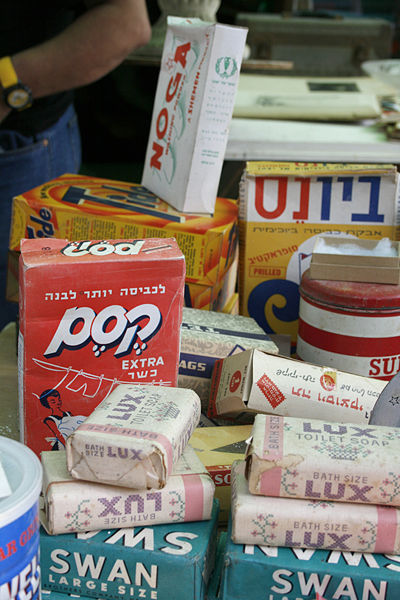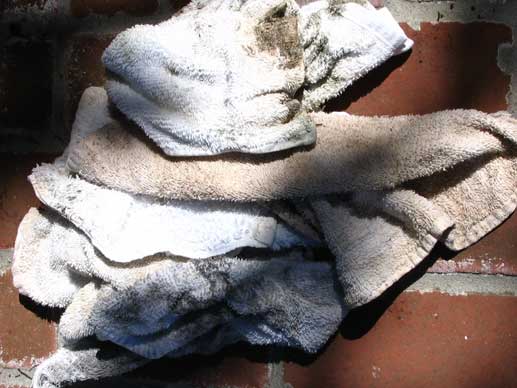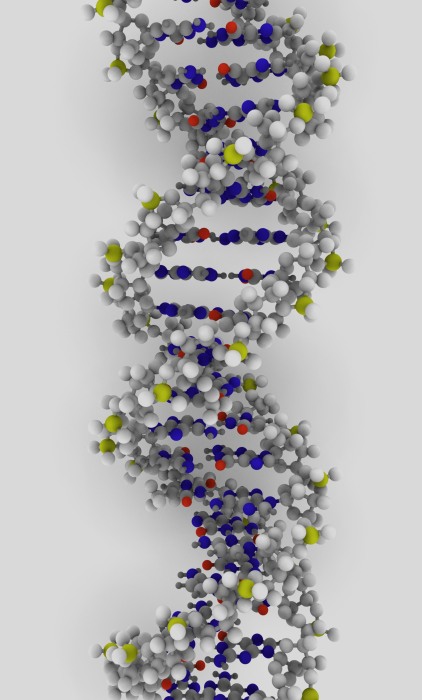Enzymes for Extra-Fast Chemistry
Interview with
Chris - Here's our next passenger. Welcome aboard Florian Hollfelder, do step into our punt. Come and have a seat. Florian's a fellow of Trinity Hall college and also from the Department of Biochemistry. You work on enzymes?
 Florian - Yes. Enzymes make reactions fast. They're the ultimate green reagents. Some food additives have enzymes. Washing powder consists of enzymes and when you look at the chemistry these chemistries are very complicated and difficult to do in the lab. Enzymes do it with rate accelerations which are large. The numbers are so large that they hardly mean anything. The accelerations are 1021, for example. That's a 1 with 21 zeros behind it.
Florian - Yes. Enzymes make reactions fast. They're the ultimate green reagents. Some food additives have enzymes. Washing powder consists of enzymes and when you look at the chemistry these chemistries are very complicated and difficult to do in the lab. Enzymes do it with rate accelerations which are large. The numbers are so large that they hardly mean anything. The accelerations are 1021, for example. That's a 1 with 21 zeros behind it.
Chris - That's how fast it makes a reaction got compared with if you didn't have the enzyme there?
Florian - That's right so if you look in the water the reaction would not be occurring at all, even after millions of years but when you put a bit of the washing powder in the suddenly proteins get degraded very quickly. That's an amazing chemical machine and actually so amazing that we understand only a very small fraction of it. We want to get farther into the unknown.
Chris - What you're basically saying is we want to be able to capture and use these molecules in the laboratory and also in industry to do things in a much cleaner, faster way that's more energetically favourable. You're out there to find out (a) how these chemical reactions occur using enzymes in the first place and (b) how we can find better ones?
Florian - Yes. That's right and the technical trick is to be so good at, first of all, making a mess and then be very accurate in finding one molecule out of billions of molecules that are useless.
Chris - Do you mean you're making different versions of an enzyme when you say you make a mess you make lots of different forms of it? Then you find the one which works best and then ask why?
Florian - Exactly. We do it exactly like nature would do it. Nature is imperfect and replicating the genetic blueprint, the DNA, we do that in the laboratory. We use a reaction to multiply DNA molecules that makes imperfect copies. We hope that they go in the right direction and that the difference makes a difference.
Chris - I see so you make a difference or an error in the DNA which changes the protein, the enzyme very subtly and then you ask has that difference translated into an enzyme that works better or worse?
Florian - This is exactly what we do.
Chris - What sort of reactions are you looking at?
 Florian - We're looking at hydrolytic reactions. Reactions where water is the reagent because they are useful. They are useful in washing powders, in detoxification of pesticides and so on. We have enzymes that are interesting because they do several things. They're generalists. They don't only do one thing well but they do several things very well. In evolution this might have been extremely useful because often in nature you find that genes get duplicated and the best way of getting the new activity as soon as possible would be if the original enzyme had a small side-activity. We call that catalytic promiscuity when an enzyme does not have only one partner but several partners with whom it can engage. Often these are different chemistries that it can do. That's why these promiscuous enzymes are a starting point for evolution. You're more likely to uncover one clone for a new activity if you already had a little bit of it originally.
Florian - We're looking at hydrolytic reactions. Reactions where water is the reagent because they are useful. They are useful in washing powders, in detoxification of pesticides and so on. We have enzymes that are interesting because they do several things. They're generalists. They don't only do one thing well but they do several things very well. In evolution this might have been extremely useful because often in nature you find that genes get duplicated and the best way of getting the new activity as soon as possible would be if the original enzyme had a small side-activity. We call that catalytic promiscuity when an enzyme does not have only one partner but several partners with whom it can engage. Often these are different chemistries that it can do. That's why these promiscuous enzymes are a starting point for evolution. You're more likely to uncover one clone for a new activity if you already had a little bit of it originally.
Chris - What sorts of things apart from washing powder are you looking at then?
Florian - For example, we are looking at phosphatases and some of the pesticides that have been put in nature in the fifties. They are very slowly degraded and so having hydrolases that break them down completely in a bio-compatible way are useful for opening up brownfield sites again to nature.
Chris - Have you got any enzymes that you've identified that do that job well then?
 Florian - Yes. We've found some enzymes that can be changed from one activity that is more or less useless to a more useful activity. We're not quite yet in industrial applications but we can show we can at least. The tricks we've developed in the technology were very important. What we've learned in the process of that is that in principle you want to start of with a jack-of-all-trades that can do everything just not very well but it can do everything just a bit. Then you enhance that background activity to get better. If you start with something that is promiscuous, it interacts with everything, you have a much better chance to find a good clone, a good enzyme.
Florian - Yes. We've found some enzymes that can be changed from one activity that is more or less useless to a more useful activity. We're not quite yet in industrial applications but we can show we can at least. The tricks we've developed in the technology were very important. What we've learned in the process of that is that in principle you want to start of with a jack-of-all-trades that can do everything just not very well but it can do everything just a bit. Then you enhance that background activity to get better. If you start with something that is promiscuous, it interacts with everything, you have a much better chance to find a good clone, a good enzyme.
Chris - You say you make a mess and find out how it works later. Do you actually ever work the other way and say right, we've now got a really good enzyme that's improved dramatically: now let's have a look at it and try and find out why?
Florian - Yeah so we then crystallise it. We wait for it to form well-defined crystals, materials which you can diffract. These are techniques that were developed in Cambridge in the 50s. Now it's fairly standard that even an amateur like me with a good collaborator can start making crystals. That then gives us insight in the inner workings of the enzymes. We can pinpoint why we found it in the library in the first place. That hopefully helps us to define a whole class of enzymes that are versatile. In case you wanted and enzyme for a specific application we now know where to start.
Chris - I was going to say because presumably the endpoint for this will be you'll understand so much about it that you can just say either take it off the shelf you've made earlier or you'll be able to tweak something to add an activity - a certain chemical reaction or ability to do something well - to an enzyme that already exists?
Florian - Yes. That's right. The other thing which I think we haven't cracked quite yet is how nature can do it so efficiently. Very often we find protein structures are very delicate. They are a bit like a bundle of wool but unlike a bundle of wool if it's not quite in the right orientation it will just collapse and become non-functional. One thing you have to do when you mutate, when you make a mess of enzymes a bit if you don't delete the activity the proteins become what is appearing when you put milk into your cappuccino. The froth on top is a denatured enzyme that doesn't function any more. We want to avoid that. There are some tricks that we don't quite understand but it can affect the structure of the enzymes so that you avoid losses from your library. Some clones just denature. They just disappear and they're not selectable any more. There are some tricks that you keep the structure constant and you start with something that is resistant to temperature. That is then enough degrees of freedom to have enough function.
Chris - Do you think you might be able to invent an enzyme to stop punts sinking? I think we might be taking on water here!
Florian - We might be able to make and enzyme to hydrolyse compounds that are toxic in the Cam at some stage or maybe an enzyme to help us to -
Chris - Bail out?
- Previous Trinity Hall
- Next Trinity College










Comments
Add a comment